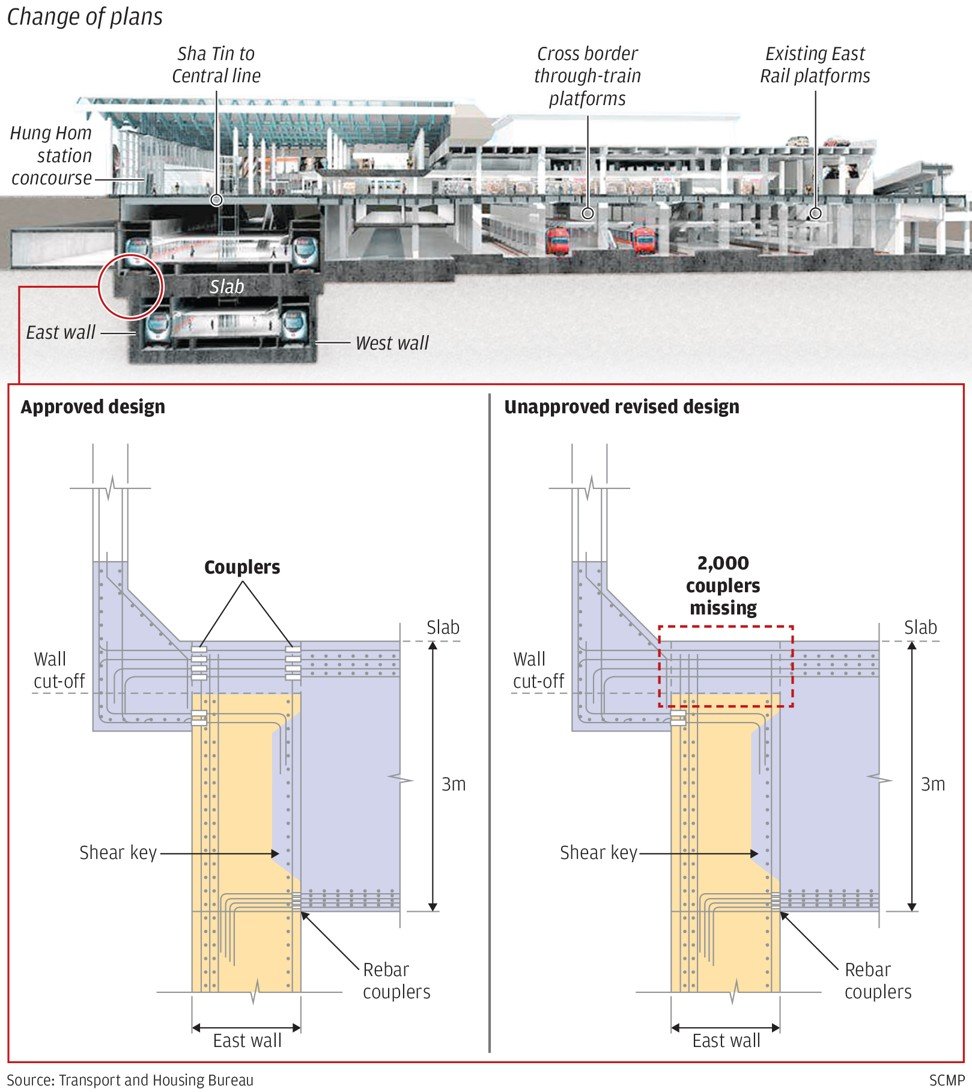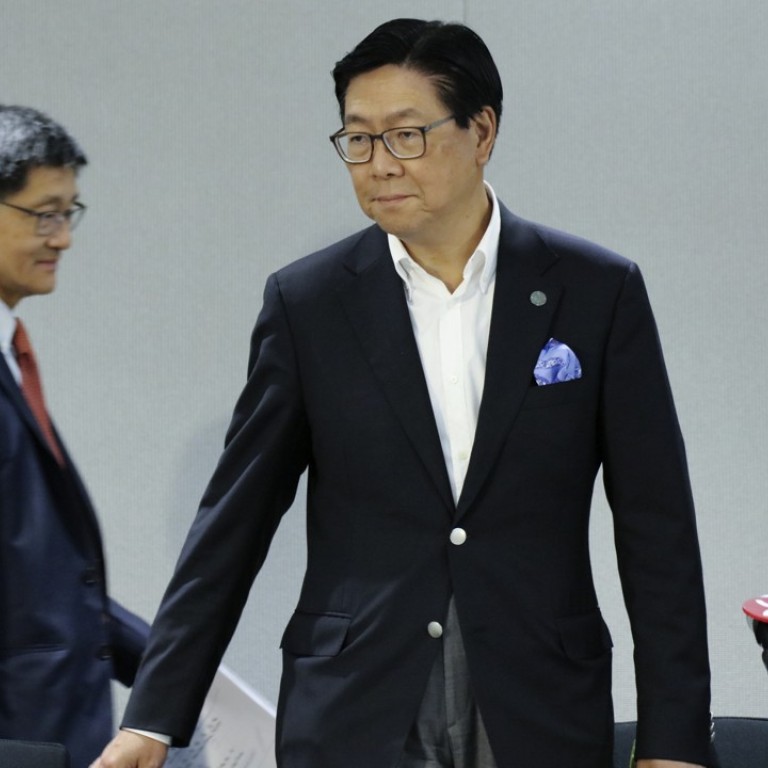
Hong Kong MTR to revamp top management as chief executive Lincoln Leong and others to leave over Sha Tin-Central rail link scandals
Chief executive Lincoln Leong to retire earlier while project director Philco Wong and three other general managers resign with immediate effect
Hong Kong’s rail operator has overhauled its top management team, with four immediate resignations and the early departure of its CEO next, after the government demanded heads roll for the scandals plaguing the Sha Tin-Central rail link, the city’s most expensive rail project.
The government – which owns 75 per cent of the MTR Corporation – said on Tuesday it had asked police to investigate “huge discrepancies” and “conflicting reports” in the rail giant’s submissions on the HK$97.1 billion (US$12 billion) project.
Police said they were conducting a comprehensive criminal investigation.
MTR Corp chairman Frederick Ma Si-hang revealed that he had submitted his resignation on Monday – for a second time – “on the grounds of accountability,” but the government had asked him to stay on until a new CEO was in place in six to nine months.
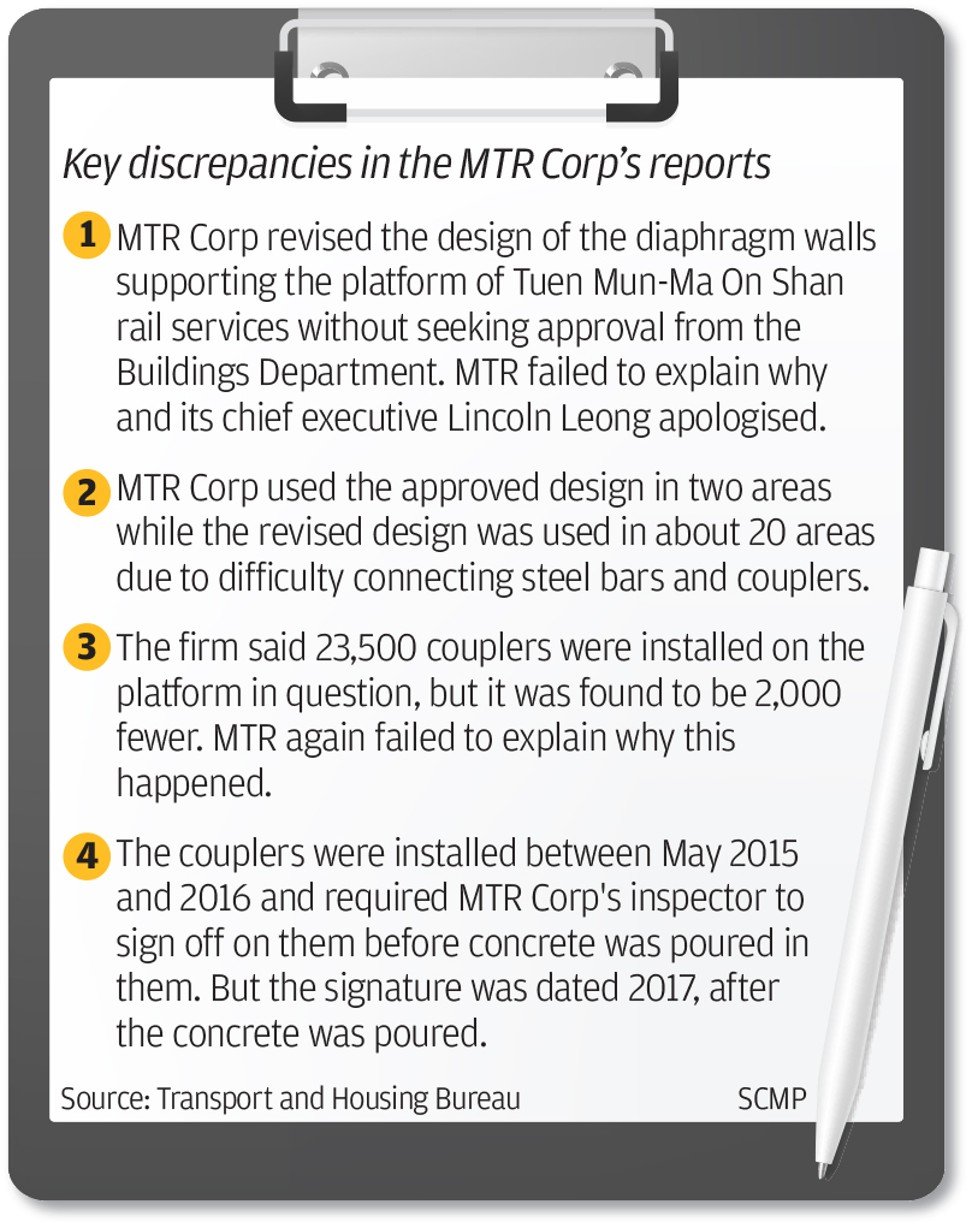
Current CEO Lincoln Leong Kwok-kuen, 58, who had just renewed his contract for two years in February, would quit earlier than expected once his successor was appointed, Ma said.
Projects director Philco Wong Nai-keung resigned with immediate effect, while three other general managers of the project – Lee Tsz-man, Jason Wong Chi-ching and Aidan Rooney – also left.
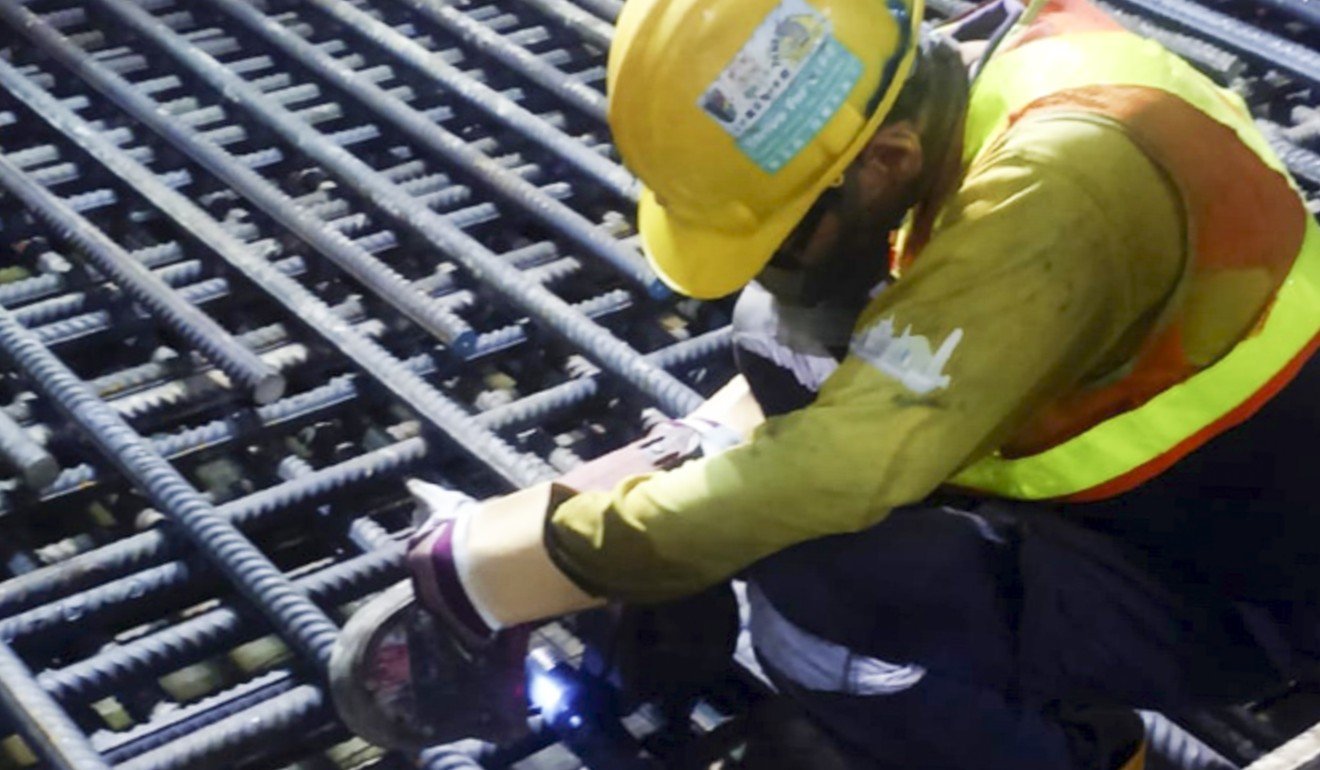
At a separate government press conference on Tuesday ahead of the MTR Corp’s media session, Secretary for Transport and Housing Frank Chan Fan said he had asked the board to “remove” those in charge of the rail link and would deploy a team to “help with a smooth transition”.
“The team has to shoulder the responsibilities and the government deeply regrets the situation,” Chan said.
When asked whether he, as the minister in charge, should also take responsibility and step down, Chan would only say: “The government has immediately followed up on the problems as soon as they surfaced. You can judge for yourself the government’s performance.”
Director of Highways Daniel Chung Kum-wah expressed doubt about the MTR Corp’s record-keeping on the project.
“We have lost faith in the management of the project,” Chung said, citing huge discrepancies in the documents detailing shoddy work along the rail line that were submitted by the railway operator in June and July.
The focus was on the platform for the Tuen Mun and Ma On Shan train services – key parts of the Sha Tin to Central link – built below the existing Hung Hom station. The MTR Corp’s submissions addressed media revelations in May that its main contractor, Leighton Contractors (Asia), had cut corners. Leighton never responded to the allegations.

A June report said construction of the diaphragm walls, which support the platform in question, was done in accordance with the approved design and 23,500 couplers were installed on the platform. A subsequent check of the documents by the Buildings Department found records of it, signed off by inspectors from the contractors as well as the MTR Corp.
But in July, the railway firm submitted drawings showing the design of the diaphragm walls was modified without the Buildings Department’s approval in advance.
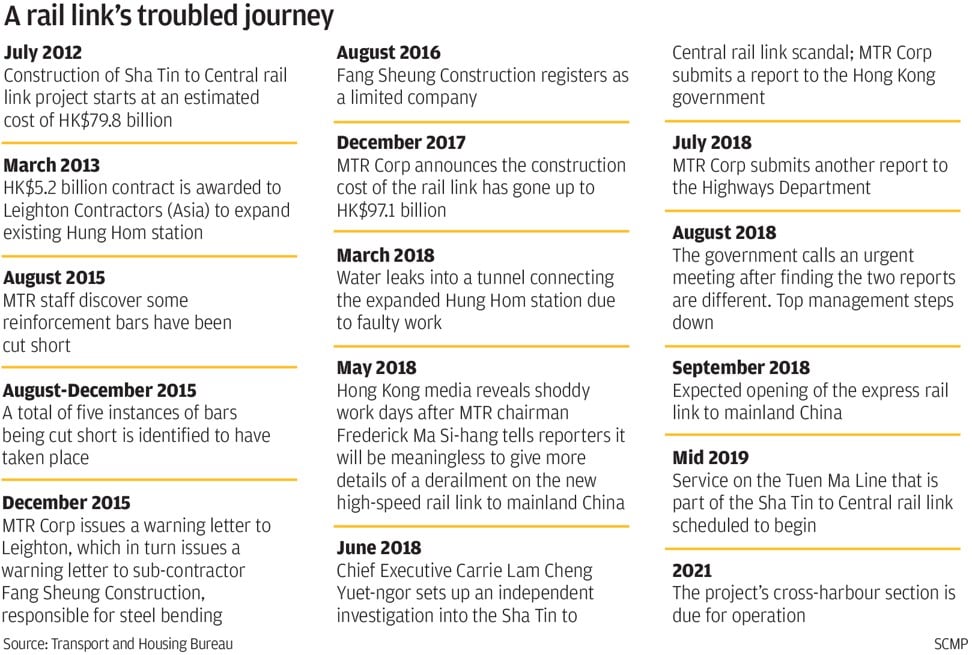
Chung said the diaphragm walls had been shortened at the top and 2,000 couplers were not installed. He cited the MTR Corp’s reply that the design needed to be modified due to “difficulty in construction”.
“This is primary school maths: 23,500 minus 2,000, how can there still be 23,500?” Chung asked, adding that the railway giant had yet to file any application for revising the design even though the diaphragm walls were built between 2013 and 2015. The Buildings Department would not accept any work beyond the approved blueprint, he said.
Director of Buildings Cheung Tin-cheung assured the public that the affected platform was still safe, and would be checked regularly.
Ma said the MTR board of directors had been unaware of the inaccurate information in the June report while Leong “apologised” twice for it.
“We were kept in the dark as the project management team has not provided us with timely report and accurate facts,” he added. “This is very disappointing.”
Leong said it was Leighton that decided to deviate from the approved design.

As for Ma’s future, a government source said it was a unanimous decision to ask him to stay on for now as chairman.
“Compared with other top brass involved in the scandal who can no longer be trusted, Ma’s direct responsibility is not as big,” the source said. “The government may win a political battle if he is gone, but who will be responsible for cleaning up the mess and hiring the new people?”
I stayed on for a simple reason - because I am a responsible person
The source noted Ma, 66, had only a few more months left on his contract, and it was broadly understood he would not be able to continue after that anyway.
Ma said: “I stayed on for a simple reason - because I am a responsible person ... I am completely willing to give up the seat to someone more capable … I am only a passer-by.”
“The rail line’s 9,000 problems are pointing to the projects director,” lawmaker Michael Tien Puk-sun, a former Kowloon-Canton Railway chairman, told the Post.
Civic Party lawmaker Tanya Chan described the management reshuffle as history repeating itself, referring to the 2014 resignation of ex-chief executive Jay Walder and former projects director Chew Tai-chong. Both of them left the company over the delay and cost overrun of the HK$84.4 billion cross-border express rail project.
Chan said this reflected the lack of improvement on the MTR Corp’s part.
Tam Kin-chiu, vice-chairman of Hong Kong Federation of Railway Trade Unions which counts 1,400 MTR staff as members, urged the management to bring in experienced hands and step up communication with the union. Morale among the railway giant’s 18,000 employees should not be adversely affected, he added.





